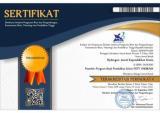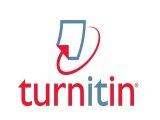Science Literacy-Based Student Worksheets to Improve Critical Thinking Skills on Acid-Base Materials
DOI:
https://doi.org/10.33394/hjkk.v11i5.8707Keywords:
student worksheet, science literacy, critical thinking skills, acid-baseAbstract
The goal of this study was to find out the eligibility of science literacy-based student worksheets to improve learners critical thinking skills on acid-base materials. The eligibility of the developed science literacy-based student worksheets viewed from validity, practicality, and effectiveness. This type of study uses Research and Development (R&D) with a 4D research model. This study model consists of the define, design, and limited to develop stages. The validity of science literacy-based student worksheets based on content criteria obtained a percentage of 37.50% (valid) with mode 3 and 62.50% (very valid) with mode 4. On the construction criteria, obtain a percentage of 15.15% (valid) in mode 3 and 84.85% (very valid) in mode 4. The practicality of the student worksheet was viewed from the responses and observations of learner activities, which earned a percentage of 97.10% and 90% with very practical criteria. The effectiveness of the student worksheet received highly effective criteria viewed from the N-gain score of science literacy of 0.75 (high), and critical thinking skills obtained a N-gain score of 0.71 (high). This is corroborated by the Wilcoxon statistical test of science literacy and critical thinking skills, which revealed a disparity between learners' capability for science literacy and critical thinking skills prior to and following the use of science literacy-based student worksheets, with a sig. (2-tailed) of 0.000. The Spearman correlation test resulted in a correlation coefficient of 0.754, indicating a significant association between science literacy and critical thinking skills, with a classical completeness of 89%. So, based on this research, science literacy-based student worksheets are declared eligible to improve learners thinking skills.
References
Azrai, E. P., Suryanda, A., Wulaningsih, R. D., & Sumiyati, U. K. (2020). Kemampuan Berpikir Kritis dan Literasi Sains Siswa SMA di Jakarta Timur. EDUSAINS, 12(1), 89–97. https://doi.org/10.15408/es.v12i1.13671
Creswell, J. W., & Creswell, J. D. (2018). Research Design: Qualitative, Quantitative, and Mixed Methods Approaches. Los Angeles: SAGE.
Facione, P. A. (2011). Critical Thinking: What It Is and Why It Counts. California: Measured Reasons and The California Academic Press.
Fisher, A. (2011). Critical thinking: An introduction (2nd ed). Cambridge ; New York: Cambridge University Press.
Hake, R. R. (1998). Interactive-engagement versus traditional methods: A six-thousand-student survey of mechanics test data for introductory physics courses. American Journal of Physics, 66(1), 64–74. https://doi.org/10.1119/1.18809
Hidayah, I. N., & Kuntjoro, S. (2022). Pengembangan E-LKPD Perubahan Lingkungan Berbasis Science Literacy untuk Melatihkan Keterampilan Berpikir Kritis Peserta Didik Kelas X SMA. Berkala Ilmiah Pendidikan Biologi (BioEdu), 11(2), 384–393. https://doi.org/10.26740/bioedu.v11n2.p384-393
Ibrahim, M. (2014). Model Pengembangan Perangkat Pembelajaran menurut Jerold E. Kemp & Thiagarajan. Surabaya: PSMS PSS Unesa.
Indah, D. R., & Hatimah, H. (2020). Pengembangan Buku Ajar dengan Model Inkuiri Berbasis Strategi Konflik Kognitif untuk Meningkatkan Keterampilan Berpikir Kritis Siswa. Hydrogen: Jurnal Kependidikan Kimia, 8(2), 123. https://doi.org/10.33394/hjkk.v8i2.3156
King, K. P. (2002). Technology, Science Teaching, and Literacy A Century of Growth. New York: Kluwer Academic Publishers.
Mitarlis, M., Azizah, U., & Yonatha, B. (2018). Pemanfaatan Indikator Alam dalam Mewujudkan Pembelajaran Kimia Berwawasan Green Chemistry. Jurnal Penelitian Pendidikan IPA, 3(1), 1–7. https://doi.org/10.26740/jppipa.v3n1.p1-7
Muna, A. N., & Rusmini, R. (2021). Pengembangan Lembar Kerja Peserta Didik untuk Melatihkan Keterampilan Argumentasi Ilmiah Peserta Didik pada Materi Laju Reaksi. UNESA Journal of Chemical Education, 10(2), 159‒171.
Nieveen, N., Plomp, T., Kelly, A. E., Bannan, B., & Akker, J. van den. (2010). An Introduction to Educational Research. Netherland: National Institute for Curriculum Development.
OECD. (2019). PISA 2018 Assessment and Analytical Framework. Paris: OECD Publishing. https://doi.org/10.1787/b25efab8-en
Rahayu, S. (2017). Mengoptimalkan Aspek Literasi dalam Pembelajaran Kimia Abad 2. Prosiding Seminar Nasional Kimia UNY 2017.
Rahayuni, G. (2016). Hubungan Keterampilan Berpikir Kritis dan Literasi Sains pada Pembelajaran IPA Terpadu dengan Model PBM dan STM. Jurnal Penelitian Dan Pembelajaran IPA, 2(2), 131–146.
Razali, N. M., & Wah, Y. B. (2011). Power comparisons of Shapiro-Wilk, Kolmogorov-Smirnov, Lilliefors and Anderson-Darling tests. Journal of Statistical Modeling and Analytics, 2(1), 21–33.
Respati, A. (2023). Pengaruh Model Pembelajaran Guided Inquiry terhadap Critical Thinking dan Collaborative pada Materi Asam Basa. Journal of Tropical Chemistry Research and Education, 5(1), 29–35. https://doi.org/10.14421/jtcre.2023.51-04
Riduwan, R. (2015). Skala Pengukuran Variabel-Variabel Penelitian. Bandung: Alfabeta.
Riduwan, R., & Sunarto, S. (2017). Pengantar Statistika untuk Penelitian: Pendidikan, Sosial, Komunikasi, Ekonomi, dan Bisnis. Bandung: Alfabeta.
Sari, R. N., & Maharani, E. T. W. (2020). Implementasi Media Pembelajaran Kimia Berbasis Digital dalam Storyboard pada Materi Larutan Penyangga Bufferpedia’’ Sebagai Sumber Belajar Peserta Didik Kelas XII. Prosiding Seminar Nasional Unimus, 3, 158–171.
Septiani, D. A., Junaidi, E., & Purwoko, A. A. (2019). Hubungan Antara Keterampilan Berpikir Kritis dan Kemampuan Literasi Sains pada Mahasiswa Pendidikan Kimia di Universitas Mataram. Prosiding Seminar Nasional FKIP Universitas Mataram.
Shaw, R. D. (2014). How Critical Is Critical Thinking? Music Educators Journal, 101(2), 65–70. https://doi.org/10.1177/0027432114544376
Sugiyono, S. (2017). Metode Penelitian Kuantitatif, Kualitatif, dan R&D. Bandung: Alfabeta.
Sutiani, A., Situmorang, M., & Silalahi, A. (2021). Implementation of an Inquiry Learning Model with Science Literacy to Improve Student Critical Thinking Skills. International Journal of Instruction, 14(2), 117–138. https://doi.org/10.29333/iji.2021.1428a
Thiagarajan, S., Semmel, D. S., & Semmel, M. I. (1974). Instructional Development for Training Teachers of Exceptional Children. Bloomington: Indiana University.
Ulandari, A., & Mitarlis, M. (2021). Pengembangan Lembar Kerja Peserta Didik (LKPD) Berwawasan Green Chemistry untuk Meningkatkan Kemampuan Literasi Sains pada Materi Asam Basa. Jurnal Inovasi Pendidikan Kimia, 15(1), 2764–2777.
Windyariani, S. (2019). Pembelajaran Berbasis Konteks Dan Kreativitas: (Strategi untuk Membelajarkan Sains di Abad 21). Yogyakarta: Deepublish.
Yasa, A. D. (2018). Pengembangan Modul Tematik Berbasis STM (Sains, Teknologi dan Masyarakat). Jurnal Pemikiran dan Pengembangan Sekolah Dasar (JP2SD), 6(1), 21. https://doi.org/10.22219/jp2sd.v6i1.5899
Zahroh, D. A., & Yuliani, Y. (2021). Pengembangan e-LKPD Berbasis Literasi Sains untuk Melatihkan Keterampilan Berpikir Kritis Peserta Didik pada Materi Pertumbuhan dan Perkembangan. Berkala Ilmiah Pendidikan Biologi (BioEdu), 10(3), 605–616. https://doi.org/10.26740/bioedu.v10n3.p605-616
Downloads
Published
How to Cite
Issue
Section
Citation Check
License
License and Publishing Agreement
In submitting the manuscript to the journal, the authors certify that:
- They are authorized by their co-authors to enter into these arrangements.
- The work described has not been formally published before, except in the form of an abstract or as part of a published lecture, review, thesis, or overlay journal.
- That it is not under consideration for publication elsewhere,
- That its publication has been approved by all the author(s) and by the responsible authorities – tacitly or explicitly – of the institutes where the work has been carried out.
- They secure the right to reproduce any material that has already been published or copyrighted elsewhere.
- They agree to the following license and publishing agreement.
Copyright
Authors who publish with Hydrogen: Jurnal Kependidikan Kimia agree to the following terms:
- Authors retain copyright and grant the journal right of first publication with the work simultaneously licensed under a Creative Commons Attribution License (CC BY-SA 4.0) that allows others to share the work with an acknowledgment of the work's authorship and initial publication in this journal.Â
- Authors are able to enter into separate, additional contractual arrangements for the non-exclusive distribution of the journal's published version of the work (e.g., post it to an institutional repository or publish it in a book), with an acknowledgment of its initial publication in this journal.
- Authors are permitted and encouraged to post their work online (e.g., in institutional repositories or on their website) prior to and during the submission process, as it can lead to productive exchanges, as well as earlier and greater citation of published work.
Licensing for Data Publication
Hydrogen: Jurnal Kependidikan Kimia uses a variety of waivers and licenses, that are specifically designed for and appropriate for the treatment of data: Open Data Commons Attribution License, http://www.opendatacommons.org/licenses/by/1.0/ (default) Other data publishing licenses may be allowed as exceptions (subject to approval by the editor on a case-by-case basis) and should be justified with a written statement from the author, which will be published with the article.










